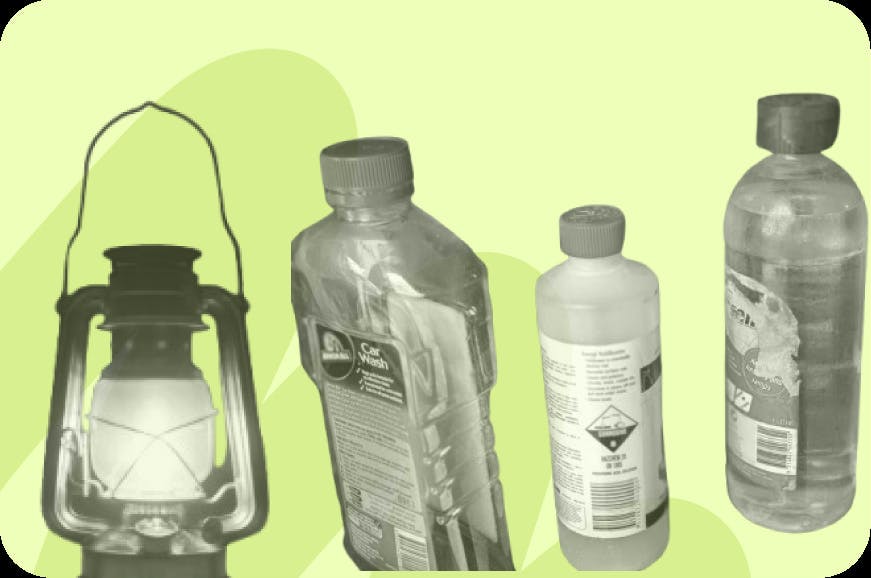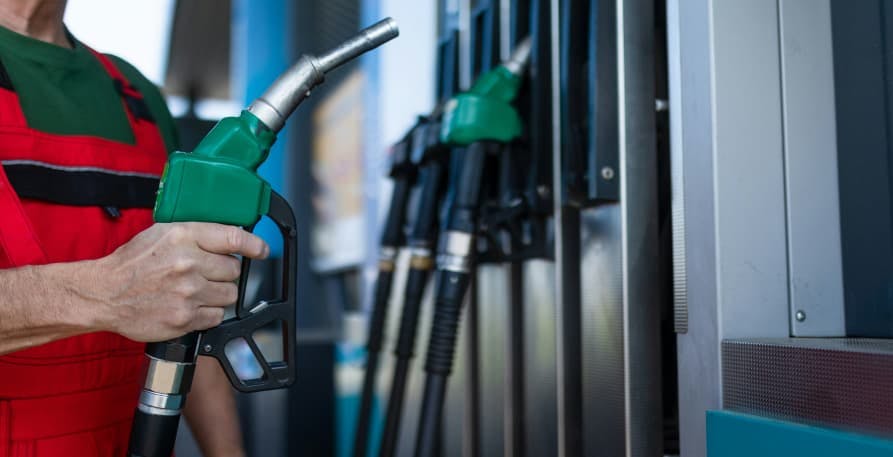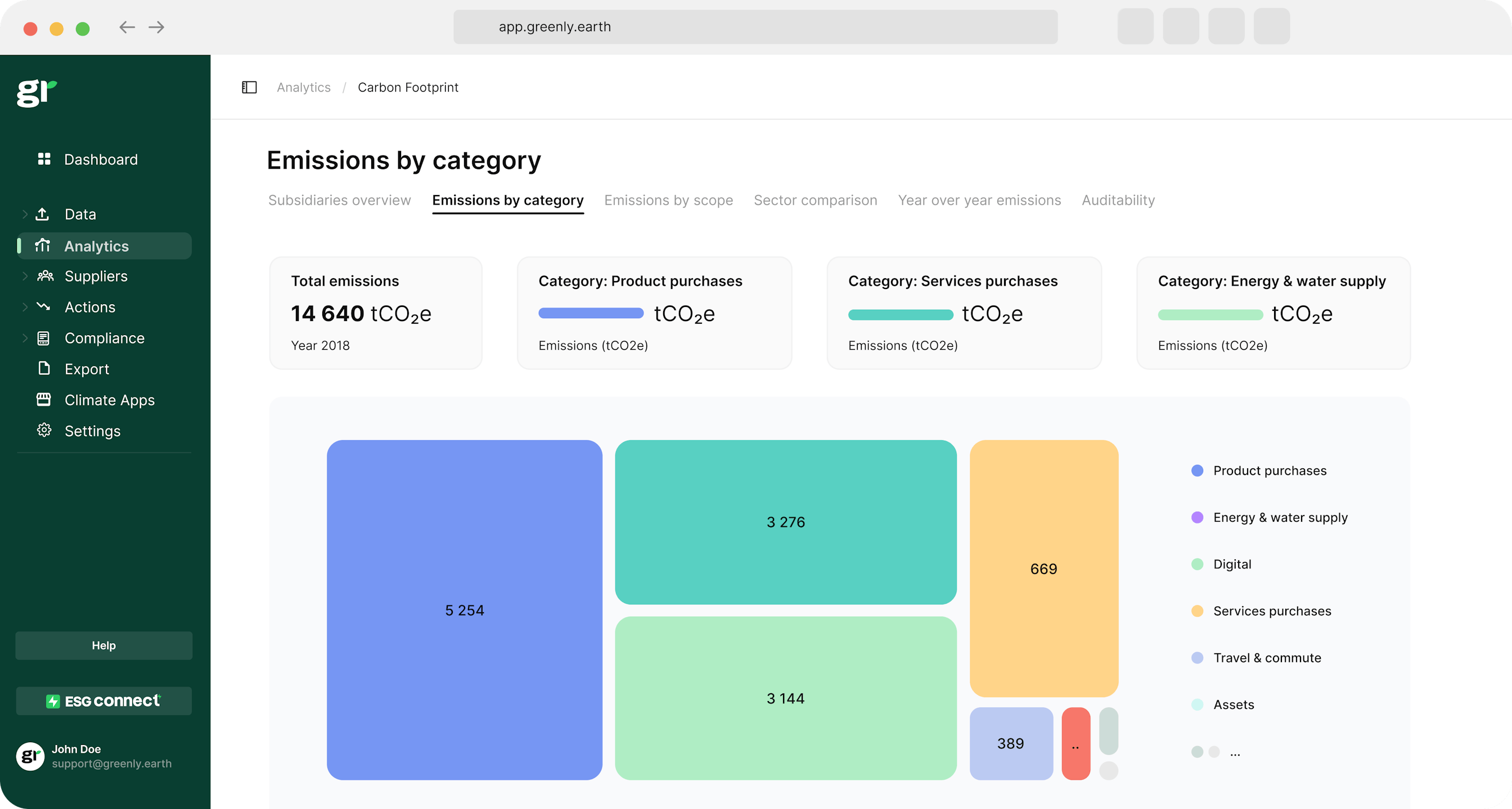ESG / CSR
Industries
What is the Problem with Kerosene?



As many countries around the world seek alternative resources to fuel their industrial processes and transportation, new light is being shed on the substances we have been using for decades – such as with kerosene and its harmful impact.
Kerosene is frequently used for fuel, such as with jet engines, to power lamps, and for other various heating, lighting, and cooking purposes.
In this article, we’ll explain what kerosene is, why it’s bad for the planet, and what we could use instead of kerosene as we move towards a more sustainable world.
What is Kerosene?
Kerosene is a flammable liquid hydrocarbon derived from petroleum, which is most commonly used for engine fuel or other heating or lighting purposes.
💡Since kerosene is less volatile than other substances such as gasoline or diesel, it has become a widely available “over the counter” type of crude oil to offer to consumers in-store.
Properties of kerosene
- Appearance & Odor – Kerosene is a pale, yellow liquid with a slight oily odor.
- Boiling Points – Kerosene’s maximum boiling point is 572 °F, and its distillation temperature is 400 °F.
- Physical Composition – Kerosene is made of various hydrocarbons, usually containing 10-16 carbon atoms per molecule.
How is kerosene made?
Kerosene is made via a separation process known as fractional distillation.
Here’s a breakdown of how kerosene is extracted from crude oil:
- Crude Oil Extraction – Through the process of drilling, crude oil is extracted from the Earth and is then sent to a refinery for further processing.
- Fractional & Kerosene Distillation – The main step in making kerosene, fractional distillation, works by heating the crude oil at a high temperature (around 350°C or 662°F). Once the crude oil vaporises, the hydrocarbons separate – where the gasoline rises to the top. The kerosene is then extracted from the distillation column it was heated in.
- Purification – Various elements are removed from the now created kerosene, such as by conducting desulfurisation to remove additional sulfur from kerosene. In addition to this, additives may be added to the kerosene to be used as engine fuel – such as for airplanes.
- Distribution – Once the kerosene has been purified, it can then be sent to stores to be purchased for household use, or to storage facilities to be used for larger industrial purposes – such as for jet fuel.
How is kerosene used?
- Household Purposes – Our homes may use kerosene for individual heaters, lamps, or to power our stoves – especially in more rural areas where there is little to no electricity.
- Aviation Fuel – Perhaps one of the most common uses of kerosene, aviation fuel often relies on kerosene – such as with Jet-A and Jet-A1 fuel for aircrafts.
- Industrial Purposes – Many industrial sites will use kerosene to power smaller engines, in-house machinery, and even for cleaning purposes – as kerosene can be used to degrease and clean ground surfaces.
- Military – Although a less common or widely-used example of kerosene, some rockets or military equipment may require the use of kerosene to power their engines – such as JP-8 (Jet Propulsion) fuel for military aircrafts or an RP-1 rocket.
👉 Prior to electricity, kerosene was used to heat handheld lamps – but in today’s world, kerosene is used for heating oil and spaces and developing various engine fuels. However, its newfound popularity and usage doesn’t come without its consequences – as kerosene has a negative impact on the environment and human health.

Why do so many people use kerosene?
The main reason why so many people and businesses alike have opted for kerosene is because it’s an efficient and affordable way to power homes and industrial operations.
💡 Kerosene produces fewer fumes in comparison to other fossil fuels, making it the more eco-friendly option amongst other finite energy sources – despite the fact that kerosene, in of itself, is still not a renewable energy source.
Here are some of the benefits for those who choose to use kerosene:
- Affordability – Kerosene is inexpensive to make, meaning it’s cheaper for businesses to buy – especially when the purchases are made in bulk. This affordable source of finite energy can help new industrial businesses get their feet off the ground.
- General Safety – In comparison to other oils, which may be hazardous or easily catch on fire, kerosene is generally safe to use and store indoors.
- Multipurpose Usage – As kerosene is easy to light and can be used in several different ways, its multipurpose properties make it an all-in-one, reliable energy source.
👉 It is important to note that while kerosene can be convenient, it doesn’t come without its caveats – as kerosene is ultimately a finite source of energy which contributes to various environment issues.

Why is kerosene bad?
Kerosene is a serious problem seeing as it can emit poisonous gases, contribute to greenhouse gas emissions, and even prove toxic to humans.
💡 When developing a new business, it is worthwhile to recognise that while kerosene may be the most affordable and functional option available – it isn’t the best source of energy to use long-term as it could both your surrounding environment and employees at risk.
Here are some of the reasons why kerosene is a problem in our world in the midst of climate change:
- Stunts Development of Clean Energy Resources – As kerosene is still frequently used and accessible to many industries around the world, such as aviation, it may prohibit the incentive to develop new, sustainable sources of energy – such as biofuels for airplanes.
- GHG Emissions – According to the International Civil Aviation Organisation (ICAO), 3.16 kg CO2 is emitted per kilogram of jet fuel used – of which the majority is made with kerosene. As the aviation industry accounts for 2.5% of global greenhouse gas emissions, and the majority of jet fuel utilises kerosene – this reveals that kerosene creates a sizable contribution to our worldwide emissions.
- Impacted Air Quality – In addition to GHG emissions, kerosene releases various particle matter – such as nitrogen oxides (NOₓ), and sulfur oxides (SOₓ). All of these can degrade our current air quality and further contribute to air pollution.
- Price Fluctuations – Although widely available, the price of kerosene is bound to be affected by uncontrollable external factors – such as supply and demand or international affairs. This can make it a financially unsustainable resource for many businesses, especially while their moving capital is not fully sufficient to adapt to these sudden changes in price.
- Perpetuates Energy Poverty – Since Kerosene is more commonly used in regions where households have little access to electricity, the use of kerosene may exacerbate the current energy inequality dilemma – as it may limit accessibility to renewable forms of energy such as wind or solar power.
The table below will further depict the reasons why kerosene is bad:
| Category | Negative Impact | Details |
|---|---|---|
| Environmental Harm | Greenhouse Gas Emissions | Burning kerosene releases CO₂, contributing significantly to climate change. |
| Air Pollution | Produces particulate matter, NOₓ, and SOₓ, leading to degraded air quality. | |
| Oil Spills and Leaks | Leaks during extraction or transportation harm soil and water ecosystems. | |
| Health Risks | Indoor Air Pollution | Emissions from kerosene stoves and lamps cause respiratory illnesses and eye irritation. |
| Fire Hazards | Highly flammable and can lead to fires or accidents in poorly ventilated areas. | |
| Resource Dependency | Fossil Fuel Reliance | Depends on crude oil, delaying transitions to renewable energy sources. |
| Economic Vulnerability | Price volatility in global oil markets impacts regions relying on kerosene. |
Is kerosene toxic to humans?
Kerosene can be toxic for human beings if accidentally inhaled, ingested, or if kerosene makes contact with your skin.
Here is how kerosene can be detrimental to human health:
- Skin Contact – If exposed skin comes into contact with kerosene, even for brief periods it can result in a burn-like reaction – including itchy, red, and sore skin with developing blisters and possible peeling.
- Drinking Kerosene – When kerosene is ingested, drinking excessive amounts of kerosene can result in a coma, convulsions, and even premature death.
- Inhalation – Similar to ingesting kerosene, its fumes can be fatal – as inhaling kerosene can cause irritated airways, dizziness, nausea, and present long-term effects as well, such as an increased predisposition to lung cancer.
👉 Overall, reducing our usage of kerosene is critical in the midst of a push to transition to clean energy economies – especially since kerosene can have a profound negative impact on the environment and human life alike.

How can we avoid using kerosene?
Luckily, there are several ways in which we can avoid the use of kerosene – such as by seeking renewable sources like bio-fuels or by using plant-based, chemical-free cleaning products.
Here are some ways to cut back on the use of kerosene:
Cleaning Alternatives
Many industries will use kerosene as a cleaning agent for their machinery, but most are unaware of the more eco-friendly options available – such as soy-based solvents and citrus-based cleaners used to remove grease and and oil.
Furthermore, there are other substitutes to kerosene for cleaning – and while they may not be as optimal as plant-based cleaning alternatives, they are still less emissive than kerosene.
Two additional examples of replacement substances include:
- Mineral Spirits – This substitute for kerosene acts as a petroleum-based solvent to remove oil and grease and is less flammable than kerosene.
- White Spirits – Similar to mineral spirits as it can remove stains, white spirits are another petroleum-based solvent which can be used in place of kerosene. However, it is important to note that white spirits are flammable and can release volatile organic compounds (VOCs) into the atmosphere.
Renewable Energy
We can mitigate the use of kerosene by employing the use of renewable energy sources, especially to power homes with heating and electricity in place of kerosene – such as with wind energy or solar panels.
💡In terms of limiting the use of kerosene, it is imperative that we expand renewable energy sources to be more accessible in rural areas – as this can allow residents in rural areas to cut back on their use of kerosene.
While renewable energy may be less conducive to fully operating businesses, there is always a way to get started in the clean energy transition – starting with a demo from Greenly.
Government Incentive & Legislation
It is vital to educate our local communities on the possible negative effects associated with kerosene, as many households and even businesses may not be aware of their detrimental environmental and health impact.
Improved Energy Efficiency
Although it sounds simple, encouraging households and businesses alike to upgrade to energy-efficient lighting, such as LED bulbs, can help to cut back on the environmental impact of traditional kerosene lamps. Incentives have already and can continue to exist, such as with Biden’s Inflation Reduction Act of 2022 – which helped to encourage Americans to opt for energy efficient options.
💡Furthermore, we should be making an increased effort to improve our electricity grids to allow rural areas to access electricity – this way, they can reduce their current dependence on kerosene for cooking, lighting, and heating.
Overall, we can easily mitigate the use of excessive kerosene by utilising technology to improve our existing energy infrastructure and encouraging businesses and households alike to lead a more sustainable lifestyle.
If your business is struggling to reduce its dependency on finite sources of energy such as kerosene and adapt to a more sustainable world, you can always turn to Greenly for the professional guidance you need to go green.

What About Greenly?
If reading this article on kerosene has made you interested in reducing your carbon emissions to further fight against climate change – Greenly can help you!
It can be overwhelming to figure out how to effectively reduce emissions in your business, but don’t worry – Greenly is here to help. Click here to schedule a demo to see how Greenly can help you find ways to ensure your company is reducing emissions as effectively as possible.
Greenly can help you make an environmental change for the better, starting with a carbon footprint assessment to know how much carbon emissions your company produces.




